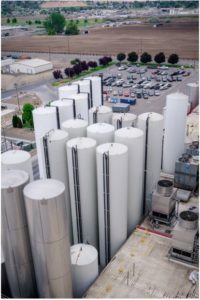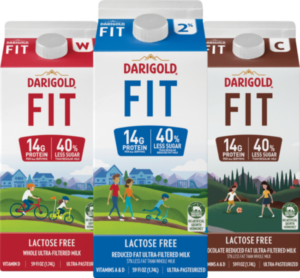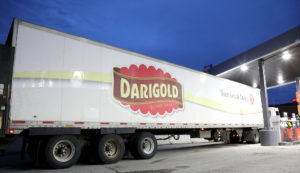Supply Chain Sustainability
With the work required to produce fresh and exportable dairy products, we constantly seek ways to reduce our environmental impact. We've put staff in place who are dedicated to finding these opportunities, driving improvement every day.
All 11 of our plants have a full-time environmental manager charged with maintaining and improving our Environmental Management System.
Every day, in each of our plants, a full-time environmental manager and their environmental team are on the hunt for ways to make our operations and plants more sustainable. Their efforts go beyond operational and environmental compliance to a focus on reducing our overall impact. Small, specific solutions they find can add up to big energy, emissions and resource savings, including:
- fixing air and steam leaks
- installing lighting retrofits
- replacing pipes, pumps and compressors
- adding insulation and making HVAC upgrades
Attention to these basic improvements is matched with larger investments and strategic changes to our supply chain that rounds out our environmental improvement plan. From packaging innovations that reduce waste and expanding a plant that is closer to dairy farms to reducing the number of miles milk must travel, we’re going into the second century of Darigold operations with environmental sustainability as one of our highest priorities.
Supply Chain Improvements
-
Plant Upgrades
Major Sunnyside Plant Expansion

Darigold invested more than $97 million to increase the capacity of our Sunnyside plant by 70%. This allows milk to be processed close to where it is produced, thereby decreasing the environmental impact associated with long-haul trucking. About 45-50 fewer truck hauls per day are needed, which adds up to a transportation reduction of more than seven million miles per year.
-
Packaging and Waste Reduction

We recently celebrated our 100-millionth caseless jug, a breakthrough innovation that dramatically reduced the environmental impact of our packaging — for both us as producers and customers.
We recycle more than one million pounds of packaging and other materials each month, an estimated 50% of all our waste.
-
Logistics and Transportation
We have improved our fuel efficiency and increased the load capacity of our truck fleet, trained drivers, re-designed trucks
 and revamped our logistics to maximize the resource productivity of our hauling operations.
and revamped our logistics to maximize the resource productivity of our hauling operations.In 2017 we brought retail delivery in-house to have more control over our product deliveries and transportation-related carbon footprint.
